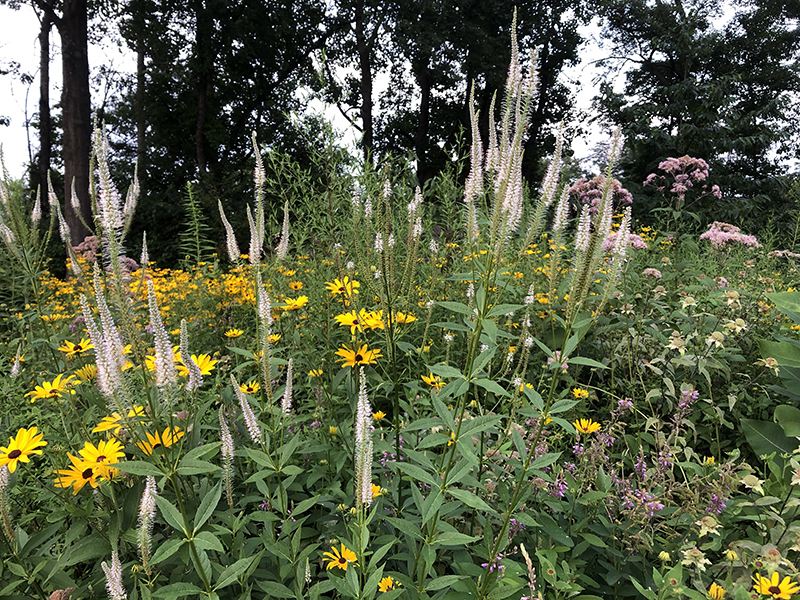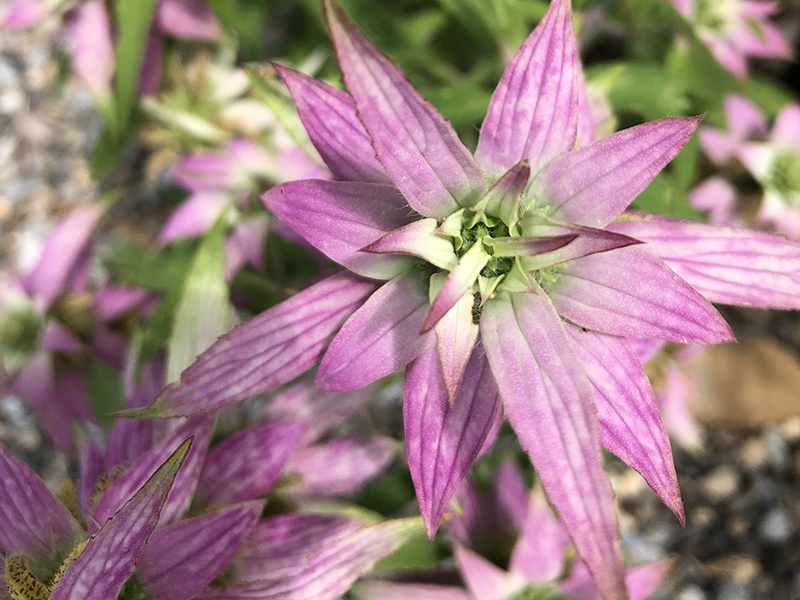
August 09, 2023| Education, Environment
By: Marty and Laurie Kane
If you’ve passed by the Lake Hopatcong Foundation recently, you may have noticed that our native gardens are ablaze with color. The plants have thrived through a dry spring and a hot and wet summer. Native plants are strongly recommended by horticulturalists because they are adapted to the local area, require less water, are less susceptible to pests and diseases, and do not generally need fertilizer. These important plant species provide nectar, pollen, and seeds that feed native butterflies, insects, birds, and other animals. We are thrilled to see many of our native plants covered with flowers and thought it would be fun to feature two that are currently in bloom.
 |
 |
| horsemint or spotted beebalm | Culver's root |
Horsemint or spotted beebalm features unusual yellow to purple, bicolor, tubular flowers. This plant is considered deer-resistant, grows one to two feet high, and does best in full sun. The nectar is a valued food source for butterflies, native bees, bumblebees, and honeybees, and will attract many pollinators to your garden. Horsemint is one of the host plants for the colorful raspberry pyrausta moth. Historically, it was used by Native Americans for numerous medicinal purposes, including the treatment of nausea and to encourage perspiration during colds.
Culver’s root is an elegant plant that reaches heights of 5 feet and has candelabra-like spikes of white flowers that open from the top down in mid-summer. It does well in full sun to partial shade. This is another plant that deer tend to ignore, while the flowers attract butterflies and bees. Culver's root has long been used medicinally for liver disorders and constipation. Native Americans also used it for spiritual purposes.
Please stop by our gardens at 125 Landing Road, Landing, and enjoy a look. You may find a new variety to try in your own garden next season!